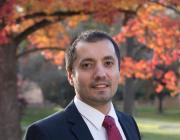Revisiting the use of globe thermometers to estimate radiant temperature in studies of heating and ventilation
Publication Year
2018
Type
Journal Article
Abstract
The globe thermometer has been considered a reliable instrument to quantify mean radiant temperature (MRT) since Bedford & Warner isolated its readings from air movement in their 1934 paper so that radiation could be quantified. Recent expanded use of radiant heating and cooling systems has presented new challenges for the usage of globe thermometers in the built environment by causing additional radiant asymmetries and performance expectations. Therefore, we replicate the original Bedford & Warner work to reconsider and develop a more holistic understanding of black globe performance and the determination of MRT in buildings. We recreate the MRT and air temperature separation to investigate the accuracy of globe thermometers on measuring MRTs. A radiantly heated open-plan laboratory and a radiantly cooled conference room were selected and measured with multiple globe thermometers and non-contacting infrared sensors. The globe temperature results were then corrected with air movement to produce MRTs and compared against MRTs simulated from measured surface temperatures. We demonstrate a significant impact of air speed on the MRTs obtained from globe thermometers. We also illustrate a less-investigated non-graybody emissivity variation and spatial variation of MRTs of up to 5 °C at the same height. We believe the increasing temporal and spatial resolution of digital sensors may create new challenges for using globe thermometers to measure MRTs, since fluctuating readings may camouflage potential MRT changes. Through a validation of our spatial MRT distribution with experimental results, we believe there is a need for better sensors that could spatially resolve MRTs, and recognize issues with both air speed and emissivity.
Journal
Energy and Buildings
Volume
180
Issue
1
Pages
83-94

